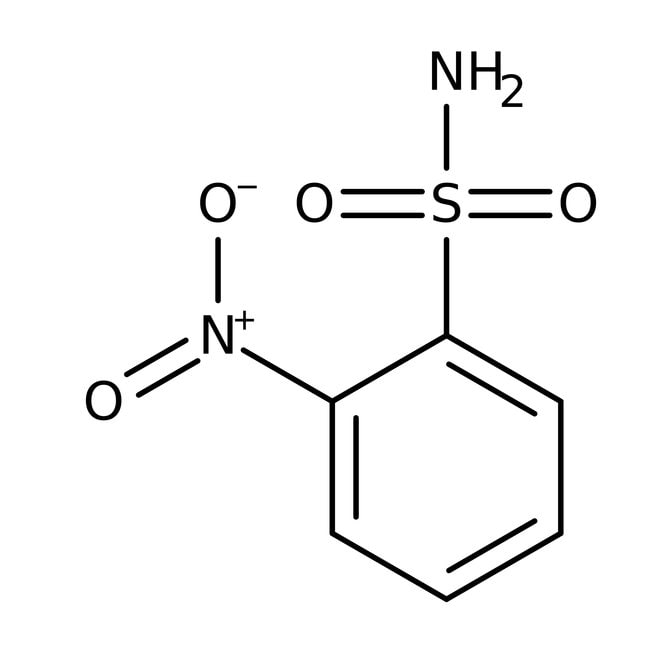Search Thermo Fisher Scientific
2-bitrobenzènesulfonamide, 98+ %, Thermo Scientific Chemicals



2-bitrobenzènesulfonamide, 98+ %, Thermo Scientific Chemicals
Identifiants chimiques
Spécifications
Description
This Thermo Scientific Chemicals brand product was originally part of the Alfa Aesar product portfolio. Some documentation and label information may refer to the legacy brand. The original Alfa Aesar product / item code or SKU reference has not changed as a part of the brand transition to Thermo Scientific Chemicals.
Il est utilisé comme réactif pour la synthèse par N-alkylation d’amines à cycle moyen (p. ex. avec des ω-bromo alcanols en conditions de Mitsunobu (DEAD/PPh3)) et pour la cyclisation à l’aide de &#;969-bromo alkyl sulfonamides (Cs2CO3/Bu4NI) qui en résultent. Il s’agit d’un inhibiteur de l’anhydrase carbonique. Il est utilisé comme réactif dans la synthèse de composés cycliques d’azote via l’hydroamination intramoléculaire, l’alcaloïde pentacyclique huperzine-Q2 du genre lycopodium, les pyrrolidines, les réactions d’insertion C-H intermoléculaires et le réactif impliqué dans l’amination intermoléculaire des alcools allyliques.
Solubilité
Légèrement soluble dans l’eau.
Remarques
Conserver à l’abri des oxydants. Gardez le récipient bien fermé et placez-le dans un endroit frais, sec et bien ventilé.
Figures
Documentation et téléchargements
Certificats
Foire aux questions (FAQ)
Citations et références
Sécurité et manipulation
Classification of the substance or mixture
CLP classification - Regulation(EC) No 1272/2008
Label Elements
Signal Word
Warning
Hazard Statements
H302 + H312 + H332 - Harmful if swallowed, in contact with skin or if inhaled
H315 - Causes skin irritation
H319 - Causes serious eye irritation
H335 - May cause respiratory irritation
Precautionary Statements
P261 - Avoid breathing dust/fume/gas/mist/vapors/spray
P280 - Wear protective gloves/protective clothing/eye protection/face protection
P301 + P312 - IF SWALLOWED: Call a POISON CENTER or doctor/physician if you feel unwell
P304 + P340 - IF INHALED: Remove person to fresh air and keep comfortable for breathing
P305 + P351 + P338 - IF IN EYES: Rinse cautiously with water for several minutes. Remove contact lenses, if present and easy to do. Continue rinsing
P280 - Wear protective gloves/protective clothing/eye protection/face protection
P302 + P352 - IF ON SKIN: Wash with plenty of soap and water